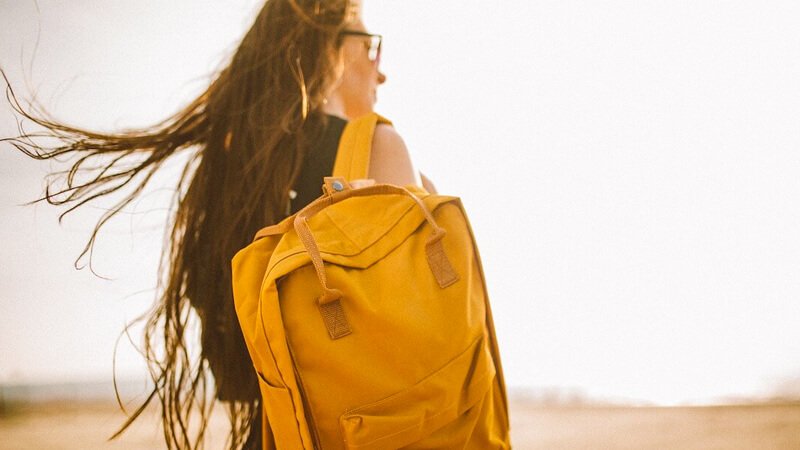Preparing the perfect packing list is crucial for a smooth travel experience, particularly when venturing to a foreign land with unique climates, cultures, and customs. However, fret not, as Egypt beckons as a destination of unparalleled wonder, boasting mesmerizing landmarks and experiences. With a meticulously curated Egypt packing list, you can revel in the splendors of this captivating country with utmost comfort and ease.
Weather Conditions in Egypt
Egypt boasts generally pleasant weather throughout the year, making it an ideal destination with no particular off-season, except for the scorching summers.
November to March: This period offers cooler temperatures and relatively fewer crowds at tourist sites, though December and early January can be busier due to school holidays. Winter temperatures range from the 50s to 60s Fahrenheit, with Alexandria and occasionally Cairo experiencing rainfall.
April to May / September to October: These months are optimal for visiting Egypt, especially if you plan to explore both the northern and southern regions. The weather is warmer but not uncomfortably hot, ideal for activities such as hiking and beach outings.
June to August: Summer in Egypt can be extremely hot, with temperatures exceeding 100 degrees Fahrenheit. Despite the heat, this period attracts peak tourism, particularly at the Red Sea resorts. However, cities like Cairo, Luxor, and Aswan see fewer tourists due to the intense heat.

Packing Essentials: Luggage and Accessories
Over time, I’ve honed my packing skills to include only essential items and strive to travel with carry-on luggage whenever possible, except for extended trips where options are necessary.
Given the likelihood of visiting multiple cities in Egypt and navigating public transportation, I highly recommend opting for a backpack for ease of mobility. Carrying a wheelie suitcase through streets can be cumbersome and impractical. Additionally, laundry services are readily available and affordable, making it feasible to wash clothes during your trip rather than lugging around excessive clothing.
Backpack: The recommended carry-on-sized backpack offers exceptional comfort and functionality, featuring ample pockets, lockable zippers, and weather resistance. For those requiring more space, the Osprey Fairview 70 Backpack provides similar comfort with added capacity.
Packing Cubes: These organizational tools are indispensable for keeping belongings tidy and minimizing clutter in your luggage. They prevent the dreaded “exploding suitcase syndrome” and come highly recommended for efficient packing.
Daypack: A durable and water-resistant daypack with multiple compartments is essential for extended outings. Its compact design allows it to fold into a small pouch for convenience.
Locking Purse: While pickpocketing isn’t a significant concern in Egypt, it’s wise to take precautions. A lockable purse offers peace of mind and ample space for essentials like a water bottle, camera, and wallet.
Organizing Bags: In addition to packing cubes, organizing bags such as an electronics organizer, shoe bags, a laundry bag, and a toiletries bag are essential for maintaining order within your luggage. These accessories prevent items from getting misplaced and simplify the packing process, ensuring a hassle-free travel experience.
What to Wear in Egypt
Preparing your wardrobe for Egypt involves two key factors: the hot climate and the prevalent conservatism in certain settings.
It’s important to cover your skin when entering religious sites, and maintaining a modest attire can enhance your comfort while exploring the country.
Women’s Clothing
For Women: Opt for lightweight and breathable fabrics like cotton and linen. Avoid synthetic materials such as polyester, as they hinder airflow.
While shorts and tank tops are acceptable, you might find yourself battling sunburn and mosquitoes, and attracting unwanted attention in crowded areas. Consider donning light, long-sleeved shirts (linen shirts are a chic choice) and opting for palazzo or wide-leg pants for a stylish and sun-safe ensemble.
For visits to religious sites and certain rural areas, covering your hair and wearing long-sleeved tops may be required. Pack a lightweight cotton scarf and blouse that can easily fit in your daily bag, allowing you to dress freely while adhering to local customs when necessary.
Men’s Clothing
In Egypt, men enjoy more lenient dress codes, but it’s still crucial to prioritize sun protection. Pack cotton or linen shorts, breezy pants, and comfortable cotton t-shirts.
While there’s no obligation for men to cover their heads at religious sites, having a scarf handy can be beneficial. You can dampen it with cold water and use it to stay cool and shield yourself from the sun.
For cooler evenings, a lightweight jacket can come in handy. Additionally, if you’re dining at hotel or resort restaurants, consider packing slightly more formal attire for the occasion.

Packing for Egypt: Summer vs Winter
Egypt boasts scorching temperatures year-round, drawing most visitors between October and April. November and March are particularly favorable if you prefer to avoid peak tourist seasons (December and January).
Regardless of the season, your packing list for Egypt remains fairly consistent. As detailed in our Best Time to Visit Egypt Guide, inland areas like Cairo and numerous archaeological sites maintain high temperatures throughout the year.
If your visit aligns with the winter months (November to February) and includes the Mediterranean or Red Sea coasts, consider packing an extra jacket or cover-up for cooler evenings. Otherwise, prioritize light and breathable cotton clothing that can be easily layered for comfort.

